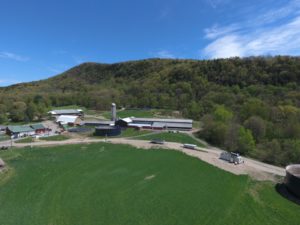May 24, 2016 BY ECONEWSNETWORK
Lots of talk in Massachusetts and around the country about wind, hydro, and solar being the answer to reducing greenhouse gas (GHG) emissions and dependence on fossil fuels, but what about anaerobic digestion (AD)? With the United States’ first-ever national food waste reduction goal, calling for a 50-percent reduction by 2030, we need to not only focus on clean energy but food waste reduction as well.
 Farm-based anaerobic digestion reduces as much as 85 percent of GHG emissions from farm-based operations, while also solving the challenge of food waste entering landfills and generating renewable energy that is available from energy suppliers such as National Grid via net metering credits. Additionally, with commercial food waste disposal bans in place in many states including Massachusetts, these farm based ADs offer the opportunity to comply, while also contributing to sustaining a farm for the future.
Farm-based anaerobic digestion reduces as much as 85 percent of GHG emissions from farm-based operations, while also solving the challenge of food waste entering landfills and generating renewable energy that is available from energy suppliers such as National Grid via net metering credits. Additionally, with commercial food waste disposal bans in place in many states including Massachusetts, these farm based ADs offer the opportunity to comply, while also contributing to sustaining a farm for the future.
It’s good news that food waste in America continues to gain attention. A National Resources Defense Council 2012 study determined that while eighty percent of freshwater used in the US goes towards growing food, only 60 percent of that food is eaten. The other 40? That ends up in landfills where it decomposes and releases methane, a greenhouse gas 25 times as potent as carbon dioxide. And that’s just part of the food waste story. It may be hard to believe, but nationwide, food leftovers are the single-largest component of the waste stream by weight. Food scraps make up 17 percent (29 million tons/year) of what we send to landfills, or enough to fill the Rose Bowl every three days!
